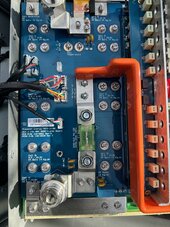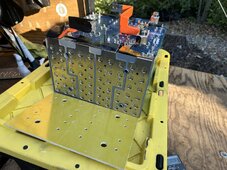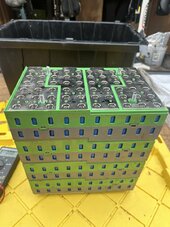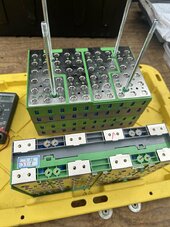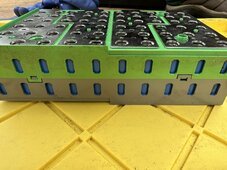I finally dug into this battery which wasn't terribly difficult. The outer metal case is screwed together and the lid comes off easily. There are 3 circuit boards that are exposed and can be unbolted and lifted off. Then there are a few more bolts that hold the main battery unit to the outer metal case. Once I could get at the main battery there are 4 long studs that hold together 4 plastic enclosures with large positive and negative busbars on each side that are spot-welded to the individual battery cells. There are 15 26650 (3.2V/3.8ah) cells in parallel and 4 of these per plastic enclosure, 16 in total in series. It looks like to open the plastic enclosure to get at the individual cells would require disrupting the spot welds of ALL the cells.
I have identified the dead string of 15 cells and each cell reads 0.0V. The rest of the cell groups in the battery all read in the range of 3.3V so it looks like it's this one group of cells that has caused the problem. I'm not really sure how this happened and despite having the logs, Discovery tech support has not been forthcoming on providing any info about the progression of events that might have caused this failure. In general, they've been entirely unsupportive of my efforts to repair this.
So the questions on the table for all you LiFePO4 experts are-
Is there any way to attempt to recover these cells? Or, once they read 0.0V are they DOA?
With the battery apart I can try charging the defective string of cells without involving the other cells or the BMS. I do have a bench DC power source with adjustable voltage and amperage.
Is there a technique using variable voltage and current settings that I might be able to inspire these cells to awaken? Or is it a lost cause?
